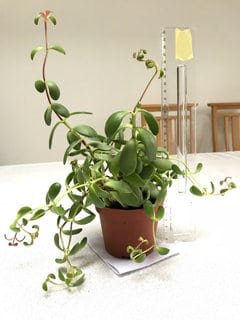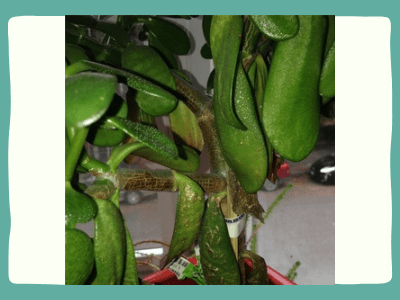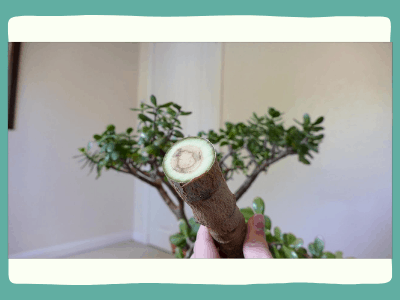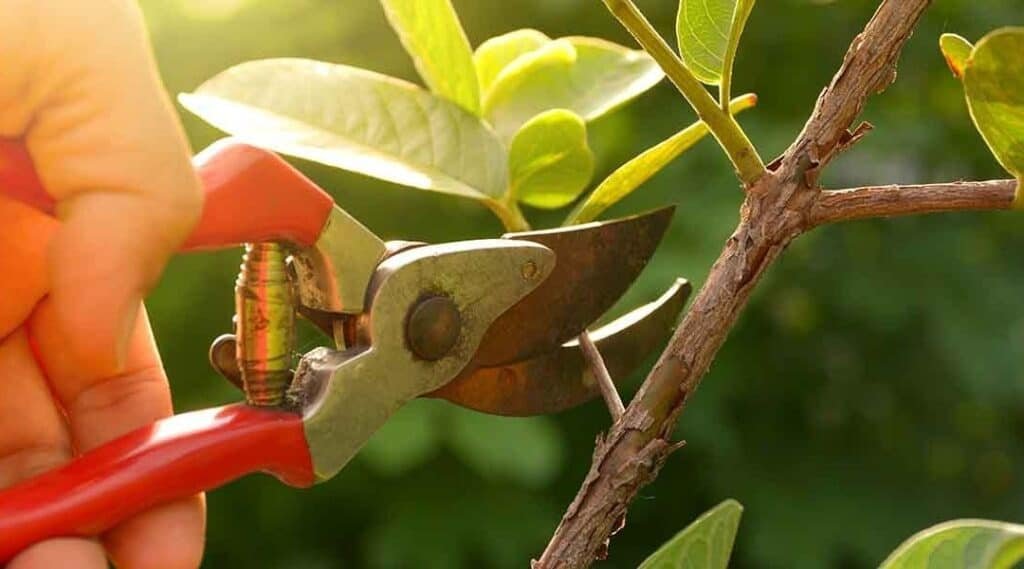How can I keep my Jade Plant from growing too long?
Seeing your Jade grows big has been the dream of every gardener!
Yet, in order to know How to maintain Jade Plant from getting lanky…
…many of us struggle with doing it right.
That’s because there are actually many variables that can make it tricky to know exactly when to water and how often….
when to prune it…
and the required sunlight…
As usual, before jump in directly in answering all of your questions…
…in order to know How to keep Jade Plant from getting leggy?
Let’s us first take a look on Sharan’s story!
I still remember that day…
…the day when my Jade turns leggy….
My jade which I have been taken care…
…and I’ve thought I have taken care of rightly…
…yet all of sudden it turns out leggy…
I can’t stop blaming myself…
What have I been doing?
How To Keep Jade Plant From Getting Leggy?

credit: houzz.com/discussions/4281930/need-help-with-leggy-jade-plant
From Sharan’s story above…
It underlines the fact that…
It’s all about tips and guide on taking care the jade plant rightly and even more…
…willing to look on ore information in dealing with all of problems arise…
Sounds complex?
Let me tell you one thing…
Nothing is complex when it comes to gardening…
as long as we know the secrets techniques..
Ups, I’m sure that you can’t wait any longer…
So…
How to keep Jade Plant from getting leggy?
First thing first…
What Cause Your Jade Turns Leggy?

credit: https://www.almanac.com/plant/jade-plants
First, it is important to know why your jade plant got leggy in the first place.
If your plant is not compact and looks stretched out…
…chances are that it has become etiolated.
This just means that the plant has stretched out because of insufficient light.
Jade plants like several hours of direct sunshine…
…and should be placed right in front of a window for best results.
If you have a nice southern exposure window…
…this will be ideal for your jade plant.
Now
Now, Re-pot Your Top-Heavy Jade Plant Into A Much Larger Container.

credit: https://www.almanac.com/plant/jade-plants
As a plant, jade grows to be fairly top-heavy.
In the long run, there’s not much you can do about it except make sure the pot your jade plant is in is sturdy enough to keep the plant upright.
Succulents shouldn’t be over-watered…
…because they’ve evolved to take in as much water as they can when they get it because they’re from locations where rain is scarce.
They’ll continue to absorb moisture to the point of decomposition if they’re over-watered.
This can eventually drive a plant past the point of no return…
…where you’re no longer able to save it and it dies.
Terracotta as a pot material, if left unfinished…
…helps to limit the danger of over-watering any plant potted inside of it.
The terracotta clay layer wicks moisture away from the soil…
…and because it’s exposed to the air, the moisture evaporates more quickly,
…allowing the soil in the pot to dry out more quickly.
Because terracotta clay is a somewhat heavy material…
…the weight of a terracotta container can also help top-heavy jade plants remain upright.
Changing to a terracotta container with a drainage hole is generally enough to keep a jade plant alive for the long haul.
Do You Dislike The Appearance Of Terracotta Clay?
You can employ drainage holes in ceramic plant pots, which come in a variety of shapes, colors, and styles.
Do you prefer a sleek, modern, and industrial look?
Why should you prune your Jade instead of repot it?

Pruning may scare some people, but it is the only way to fix a leggy jade plant.
Spring or early summer are the best times to prune your jade plants.
The plant will be in active growth during this time and will begin to fill out and recover much more quickly.
Jade plants may be simply pinched off at the growing tip if they are very young or very small.
Pinch it off with your thumb and forefinger.
The new stems that grow from the point where you crushed it should be at least two.
You can prune it back harder if your plant is larger, older, and has several branches.
If you prune your jade back, you should not remove more than a quarter to a third of the plant.
To avoid spreading illness, make sure you use a sharp set of pruning shears with a sterilized blade.
You can do this by cleaning the blade with rubbing alcohol.
Then, envision where you’d need the jade plant to expand and utilize your pruning shears..
..to make cuts directly over a leaf hub (where the leaf meets the stem of the jade).
At each cut, you will get at any rate two coming about branches.
On the off chance that you have a plant that is a solitary trunk and you need it to look more like a tree and branch out..
..you can undoubtedly achieve this with persistence.
Basically eliminate the greater part of the lower leaves and squeeze off the developing tip.
When it begins developing and grows more branches..
..you can rehash the interaction and squeeze out the developing tips..
..or prune the branches back until you accomplish the ideal look you are going for.
If you don’t like the look of your jade plant right now…
…say because it grew in a little leggy and you’d like to give it a second chance by moving it to a better-lit location and giving it a chance to grow in leaves that are much denser…
…you could use this strategy and prune your succulent instead of re-potting it.
You should clip your top heavy jade plant if you wish to have additional jade plants.
You can easily make more jade plants from the cuttings you take away after pruning.
You can use these to start a number of jade pots around the house…
…rather than a single tree-like plant, combine these cuttings in the same container…
….to create a dense-looking hedge or bush-like arrangement.
If you want your jade to stay little and charming, you can prune it as well.
If you like smaller plants and want your jade to stay small without needing to be pruned over time…
…you can lower the size of the plant pot you place it in, or start a cutting in a teeny tiny terracotta pot with a drainage hole.
Because jade will only grow to the size of a pot, this is the best long-term solution.
Personally, I believe a collection of miniature plant pots like this would be very charming if they were clustered together.
Unless you’re content to prune your jade over and over, you’ll probably want to re-pot it in the long run…
It’s better if you know the right way of repotting.
… Jade will become top heavy again and again as time passes.
But, if you’re willing to prune…
…your plant will survive without a new home in the meanwhile.
When it comes to pruning jade, I’ve found that you may go wild and do whatever you think looks best.
Cutting anywhere on the plant is usually preferable if you want new, fuller growth to sprout…
…underneath the cut, leave at least two or three leaves on the stem.
Just above where you took the cutting, two new leaves should start to sprout…
…but, I’ve seen that if you don’t leave a couple of leaves on the stem, new growth emerges elsewhere rather than on the left-bare branch.
Jade is a very hardy plant that can handle almost anything you throw at it.
Cuttings have always rooted for me despite the fact that it takes a lot of pruning back.
To make cuttings, lay all of the pieces you’ve hacked off in dry soil, let them sit for a few weeks…
…and then water them as usual.
Within a month, new roots should begin to root.
What To Do If Your Jade Plant Is Leggy
It’s possible to treat your jade when it starts to get leggy..
..resulting in a fuller, bushier plant.
Succulents are slow-growing plants, so this process takes time.
Increase its exposure to sunlight
The first step to fixing this problem is to try this simple solution.
Determine how much light your plant receives throughout the day, and whether the window receives any shade.
Many people underestimate the amount of sunlight that a given location receives.
Move your jade plant to the window that receives the most light once you’ve determined which one it does.
You shouldn’t touch the glass when you move it closer to the windowpane.
Your jade plant’s distance from the window has a dramatic effect on the amount of light it receives.
Moving a plant 2 to 3 feet from a window reduces the amount of light it receives by half, compared to being right on the windowsill.
Make sure your windows are clean to let as much light into your home as feasible.
A grow light can provide supplemental light
It might be necessary to purchase a grow light if you live in an apartment or house that doesn’t receive much natural light or if the weather is especially dark during the winter.
The sizes and prices of grow lights can be adjusted to fit your space and budget.
To give more light for your most demanding houseplants, you can use LED or fluorescent growth lights.
Plants’ temperatures should be reduced
Outdoors, a drop in temperature correlates with a shortening of daylength..
..which affects the amount of light a plant receives.
When the sun is less intense during the cool months..
..plants become dormant as a natural preventative measure against etiolation.
The jade plant will be able to create shorter leaves..
..if the temperature is lowered, or moved to a room with cooler temperatures, while keeping high light conditions.
Cut off the growing tip of the stems.
In response to being pinched off the top, the meristem, a cluster of cells responsible for growth..
..releases hormones that cause lateral growth points to appear.
Instead of reaching upwards for light…
…the clusters of cells on the stems will begin to grow outwards…
…forming more lateral branches and resulting in a bushier plant.
Cut the top off of leggy stems, removing the stem up to just above what is known as a leaf scar.
A brown ring surrounds the stem in this area.
In addition to promoting bushier, fuller growth, this will also induce hormones that stimulate side branches.
In addition, you can also propagate the top that you removed so that you will have a new plant.
Preventing Jade Plant Stretching
The best way to prevent legginess is to take good care of your jade plant.
Plants that are provided with their basic needs will grow strong and healthy, naturally preventing legginess.
Here are some tips for growing a strong jade plant.
Sunlight
It takes a lot of sun for jade plants to grow properly without becoming leggy.
As a minimum, they prefer 4 to 6 hours of sunlight daily; indirect, yet bright light is best, since too much direct light can result in leaf burns.
Your jade plant will grow full and bushy if you place it in a south-facing window.
In the absence of a south-facing window, a window with western exposure is a second-best choice.
Temperature
During the day, jade plants prefer temperatures ranging from 65 to 75°F, and at night they prefer temperatures of 50 to 55°F.
If the soil is dry, jade plants can survive almost to freezing temperatures if the temperature exceeds 90°F.
Generally speaking..
..cooler temperatures will encourage slower, more compact growth, which in combination with high light levels will produce a really compact, bushy plant.
Watering
It is common for homeowners to notice rotting stems at the base of jade plants that result from overwatering.
Jade prefers soil that is on the dry side.
The stems of chronically overwatered jade plants will become thin and spindly, and the foliage will yellow.
If you overwater your jade plant, it will develop poor health and look leggy over time.
Water jade plants only when the media is absolutely dry, especially in the fall and winter…
…when the plants are dormant; then, water thoroughly until the water drains freely from the bottom of the container.
Choose a growing medium designed for succulents and grow your jade plants in clay pots to prevent their roots from becoming too wet.
Succulent potting mixes typically have a higher sand content to allow water to drain more quickly.
Clay pots are more porous than plastic pots and provide for better air motion through the root zone.
Fertilizer
If they are actively growing, jade plants will benefit from fertilizer every now and then.
While jade plants do not require much fertilizer, prolonged deficiency will result in weak growth and leggy growth.
Follow the label directions on a succulent-specific fertilizer during their active growing season.
Winter and fall are the best times to skip fertilizer.
Pruning
Periodically remove new growth with a pair of clean, sharp scissors or bonsai pruning shears.
You can encourage your plant to grow thicker and bushier instead of taller by removing the tips of the stems.
It’s great to know that though you may not have the ideal light conditions for jade plants, you can compensate for this by pruning regularly.
Pest Management
Jade plants typically do not have pest problems unless they are in a humid environment or their soil is kept too wet.
Over time, a pest-affected jade plant will lack the vigor to grow robustly and will look spindly.
The jade plant can be infested with scale, whiteflies, and mealybugs when grown indoors and overwatered.
Check your plants regularly for bugs.
Remove pests manually to prevent further damage or treat the plant if you find any.
Neem oil, an organic pesticide, is effective against insects with soft bodies.
Repotting
Repot your jade plant every couple of years into a larger container and refresh the potting soil.
By doing so, they are prevented from becoming too constricted in a small space, or root-bound.
Repot the plant every time you can, carefully removing as much of the growing media from the roots as possible.
Place the jade plant in a larger container by about 2 inches.
It is much easier to prevent your jade plant from becoming leggy than to fix one that has become very leggy.
Remember to provide lots of light, prune regularly, and water thoroughly.
Bonus Option: Weigh Down Your Jade Plant Pot in Other Ways
There are a few things you can do to make your plant pots heavier…
…that have nothing to do with switching to a heavier pot.
What is the simplest method?
Fill the bottom of your plant pot with landscaping gravel rocks.
While it’s not true (putting boulders to the bottom of a pot doesn’t increase…
…or decrease drainage — it makes no impact to drainage at all), adding this weight helps keep jade plants upright.
Which is especially useful if you have cats at home….
…especially the types who get up to mischief by toppling over things like water bowls in a fun manner.
P.S. keep it away from your pets as Jade plants are classified as highly toxic plants for dogs and cats
Rather than putting rocks to the bottom of your succulent’s container…
there is a strategy that both adds weight and improves drainage…
…making it far less likely that you’ll over-water because the potting substrate you employ will dry up more quickly.
The method is one I wouldn’t do for flower pots that are too large to move around easily…
…because it adds a lot of weight depending on how much you use.
Basically, the trick is to mix concrete sand (i.e. very coarse sand, not fine beach sand) into your potting mix or…
…if you’re going to use a lot of sand to add a ton of weight – I do this with regular topsoil potting mix…
… when I fill the flower beds outside, getting them ready for succulents…
…because I don’t want to put pearlite in the soil outside, despite the fact that I require the drainage that it provides in pots.
Because perlite is so light, it can easily fly away when there is even a slight breeze…
I combine concrete sand and dirt in about 50/50 quantities.
I’ve heard that some people use volcanic rock/lava rock as an alternative…
…but this would be a lot more expensive for me than just getting as much concrete sand as I need…
…concrete sand is outrageously cheap, as it is here.
If you don’t need much extra weight, you can always top dress your jade plant’s container with rocks and/or stones.
This looks great and can really give just enough heft to keep a pot from toppling over….
…without making it too heavy for you to pick up and move when you need to.
Conclusions
I hope this post is able in answering: How to keep Jade Plant from getting leggy?
Now I’d like to know what you have to say.
You are already know How to keep Jade Plant from getting leggy? in the most easiest and fastest ways….
…that I’m sure there are not many people aware of it…
So, is preventing your Jade to turn leggy difficult?
Um, not really!
As now you, yourself, are able to do it, right?
If you still have any questions on our topic of How to keep Jade Plant from getting leggy?
…or even you need to know a more detailed steps to do in dealing with it….
…feel free to contact me!
Frequently Asked Questions Around Jade Plant Getting Leggy
What Do You Do When Your Jade Plant Gets Leggy?
When your jade plant becomes leggy, it might be due to a number of factors.
One possibility is that you may not have been watering it regularly enough.
Jade plants are known to require regular waterings in order to maintain…
…their lush growth and vibrant color.
Another possibility is that the soil’s pH level may be incorrect for jade plants.
It can often be corrected by adding limestone powder or vinegar to the garden bed.
If this doesn’t work, then you might need to purchase a special…
…pH-balanced fertilizer designed specifically for Jade Plants or propagation…
…material from a nearby nursery or garden center.
Regardless of the cause, taking care of your jade plant will help ensure…
…healthy growth and beautiful foliage long into future seasons!
How Do I Make My Jade Plant Bushy?
Jades are some of the most popular plants in the world, and for good reason.
They are beautiful plants that come in a variety of colors and can be used to create a whole range of decorative items.
One common question that people have is how to make their jade plant bushy.
One way is to use bonsai wire or silk thread to attach branches directly to the center stalk of your jade plant.
This will help it grow more evenly and increase its stability.
Additionally, you can fertilize your jade with organic matter every 2-3 weeks if you want it to grow faster.
How Do I Make My Jade Stem Thicker?
There are several ways to make your jade stem thicker, including soaking it in water…
…and then applying honey, using gelatinous substances such as collagen powder…
…or seaweed extract, or adding minerals like potassium chloride.
Ultimately, the most effective way to make your jade stem thicker is trial and error.
Start by trying different methods until you find one that works best for you.
You can also visit an online resource like ideal jade supplementation.
Should I Trim My Jade Plant?
There is no definitive answer to this question as it depends on the individual…
…jade plant and how well it’s taken care of.
However, most experts recommend that you trim your jade plant only…
…when necessary in order to maintain its shape and size.
If you need to trim it, avoid cutting into the tree’s trunk or roots as this could cause damage.
Finally, water your jade plant regularly so that the soil stays moist and healthy.
How Do You Keep a Jade Plant Upright?
If you have a jade plant, it is important to keep it upright so that the leaves can get enough sunlight.
You can do this by securing the plant with wire or rope and tying it down in…
…an area where sunlight reaches all of the leafy parts of the plant.
Additionally, make sure that there is soil available for roots to grow into so…
…that water and nutrients can be absorbed.
Jade plants are known for their beautiful green foliage and intricate patterns…
…but keeping your plant healthy will require some work on your part.
By following these simple tips, you should be able to enjoy this beautiful…
…succulent garden without any problems!
How Often Should You Repot a Jade Plant?
Repotting a jade plant should be done every three to six months, but this varies depending on the size and type of jade plant.
If you notice that your jade plant is starting to yellow or has dried out leaves, it is time to repot.
To do so, take off the pot and roots using a fork or wrench, then…
…wash the soil and planting media well before putting them back in.
You can also add new soil if needed.
Make sure that the pot exceeds two-thirds of the original container’s depth…
…because too much space will allow air circulation which is beneficial for plants.
Finally, water lightly once again and place your jadep into a sunny spot for optimal growth.
Why are My Jade Branches Drooping?
There are a few reasons why your jade branches may be drooping.
One possibility is that the soil around the tree has become compacted over time…
…which can lead to stress on the roots and eventually loss of vigor in the branches.
Using a blower or an air pump, you can fix this problem by aerating the soil…
…around your jade tree several times per year.
Another possible cause of droopy jade branches is lack of water.
Try using a drip irrigation system instead of relying solely on rainwater for hydration purposes.
If you find that rainfall isn’t sufficient, invest in a groundwater tank to have enough water available at all times.

